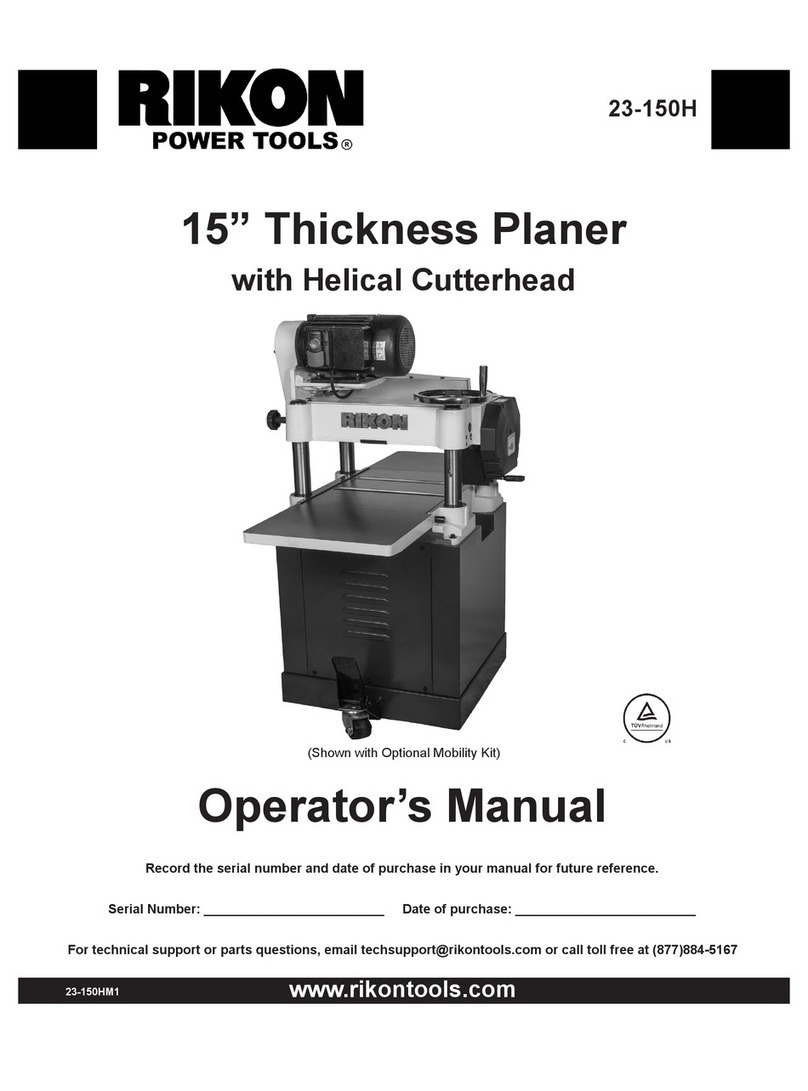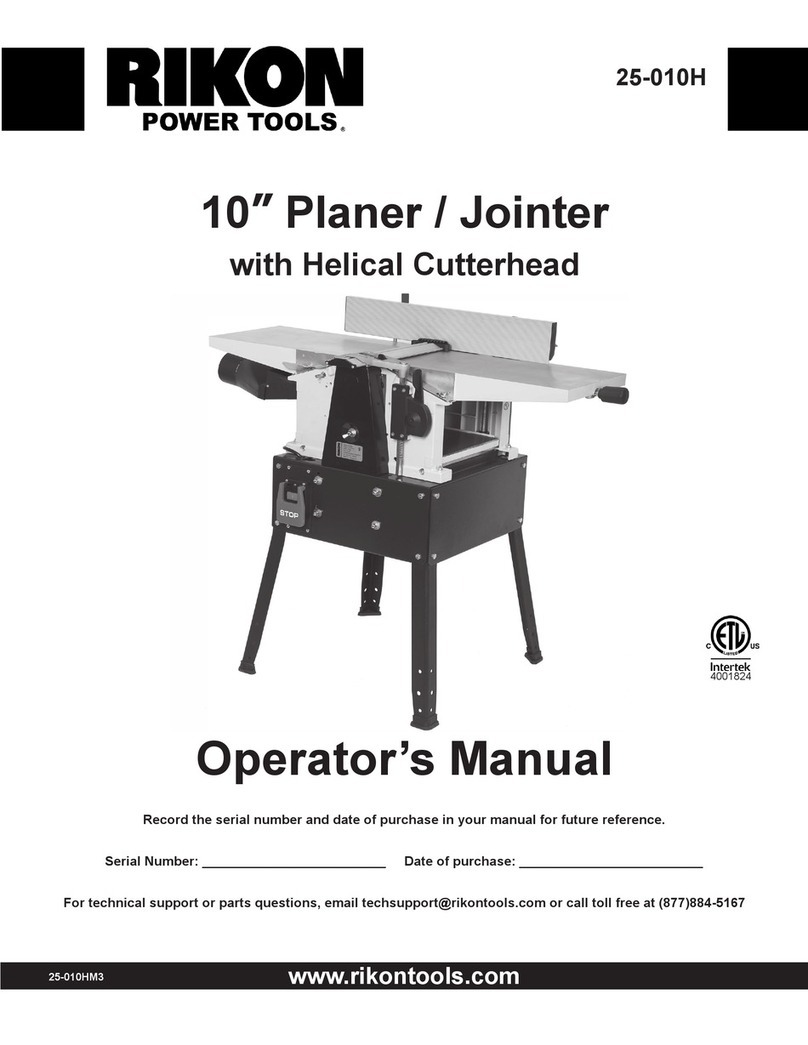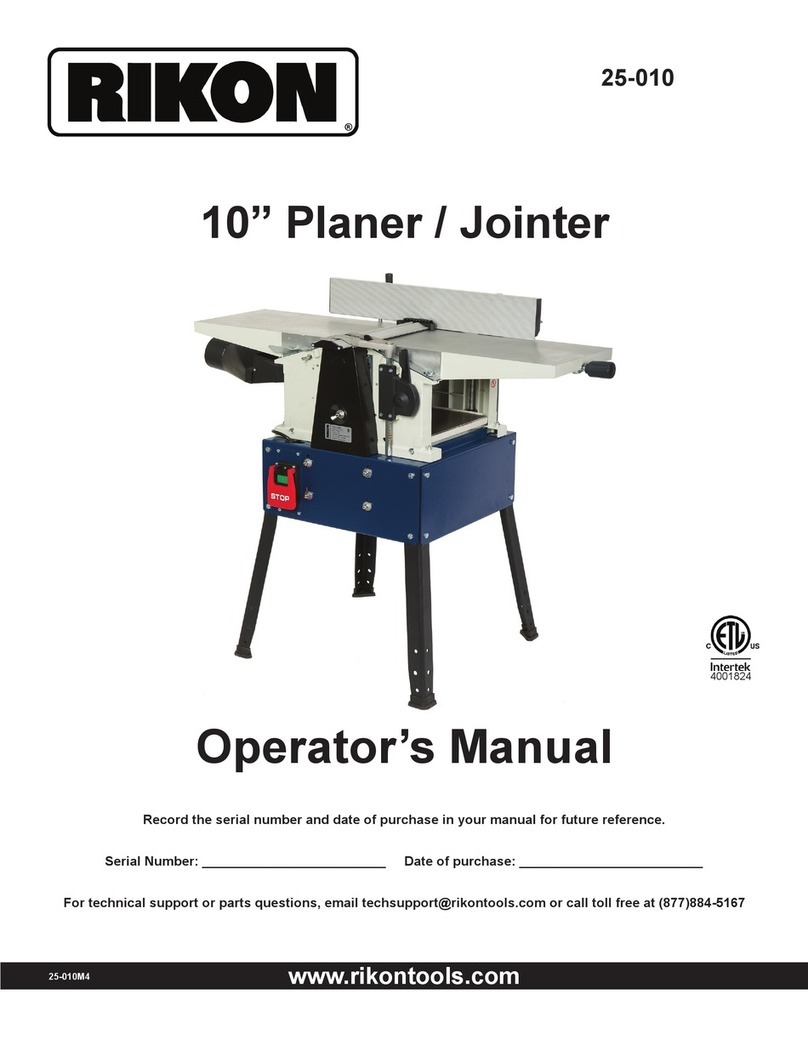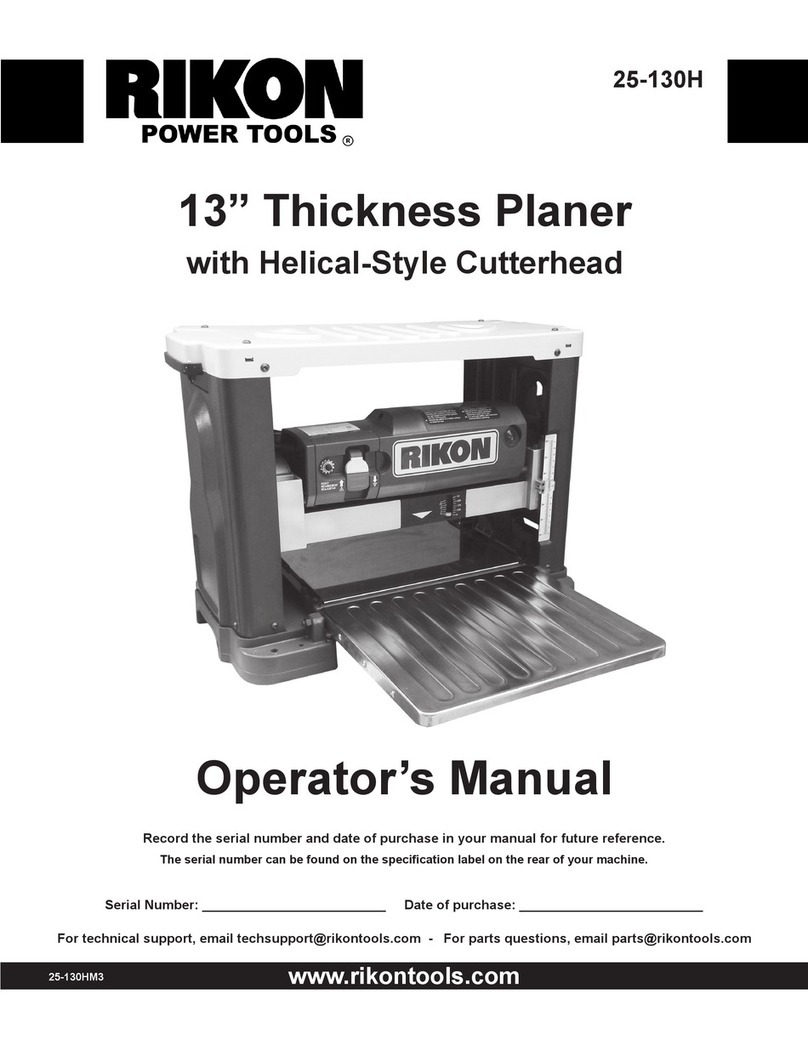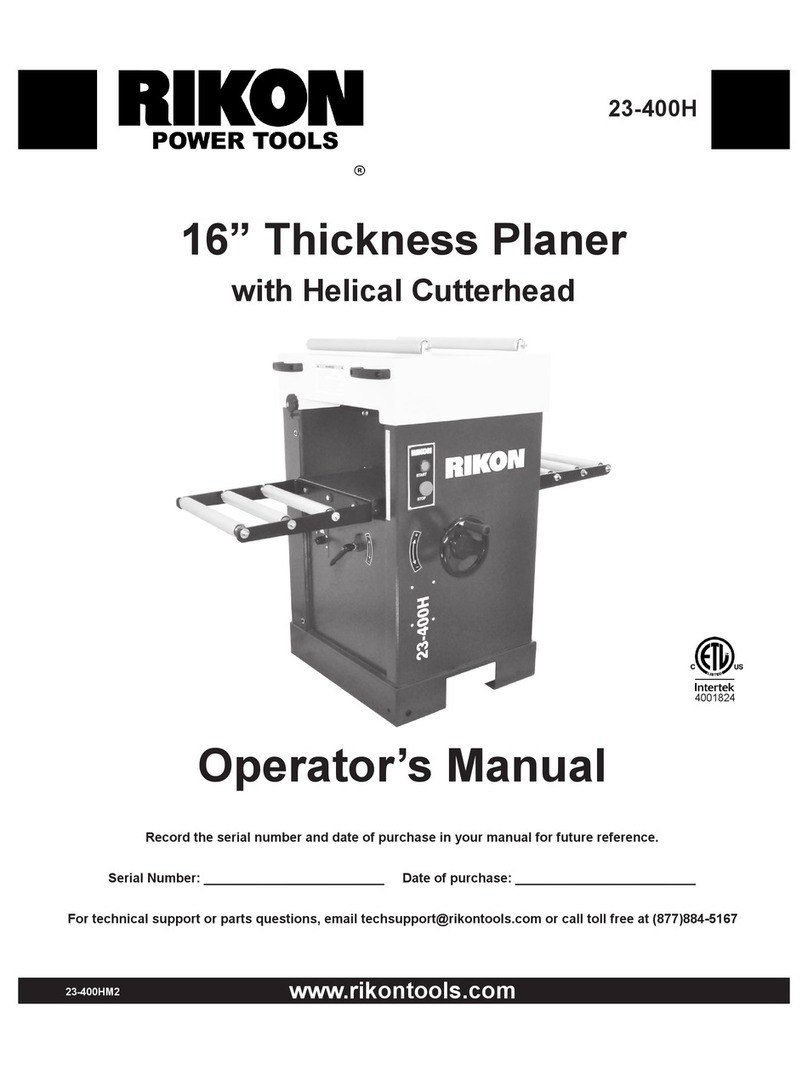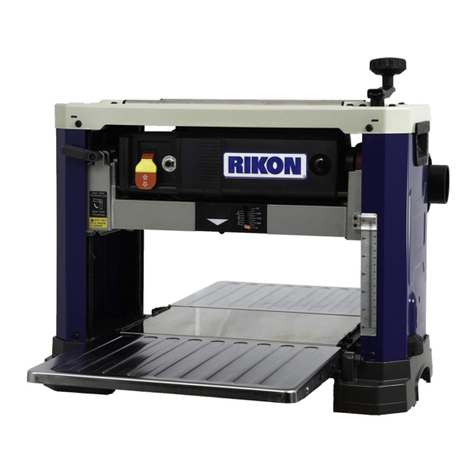2.8 SAFETY INSTRUCTIONS FOR PLANERS
A planer is a tool which can, due to operator carelessness, cause serious personal injury. It is therefore strongly recommended you
read and observe:
· these instructions, particularly the special safety information in the respective chapters;
· the relevant guidelines or regulations for the prevention of accidents pertaining to the use of planers, where applicable.
Keep all documents, supplied with the machine, for future reference.
The planer shall only be started and operated by persons familiar with planers and who are at any time aware of the dangers
associated with the operation of such tool. Persons under 18 years of age shall use this planer only under the supervision of an
instructor in the course of their vocational training.
The following residual risks do principally exist with planers and can not, even by employing safety devices, completely eliminated:
- Hazard generated by environmental conditions:
do not operate the planer in rain or damp environment. Ensure sufficient lighting. Do not
operate the planer near inflammable liquids or gases.
- Hazard to other persons in the work area:
Keep bystanders, particularly children, out of the danger zone.
- Risk of injury by machine faults:
check the planer for damage before any use. Do not operate the machine with a damaged part. Replace blunt cutter knives at once.
Risk of injury by kickback if a blunt knife gets caught in the workpiece's surface.
- Risk of injury by an unstable stand of the planer:
when working long stock use suitable supports on both sides of the machine. Avoid adverse body positions. Ensure firm footing, and
keep your balance at all times.
- Risk of injury by foreign objects in the machine:
prior to any starting of the machine ensure that there are no objects (e.g. tools) in the machine.
- Risk of injury by workpiece kickback (workpiece is caught by the rotating cutterhead and thrown back against the
operator):
operate machine only with a fully functional anti-kickback lock. Always use sharp cutter knives. If in doubt check workpiece for
inclusion of foreign objects (e.g. nails, screws, lose knots).
- Risk of injury by touching the rotating cutterhead:
always keep your hands well clear of the cutterhead. Switch machine off and plug out if it is not used.
- Danger! Drawing-in/trapping hazard!
Take care that no parts of the body or clothing can get caught and drawn in by the rotating cutterhead (do not wear neck ties and
garments with wide sleeves; contain long hair with a hairnet).
- Risk of injury by cuts with cutterhead at standstill: Wear gloves when changing cutter knives.
- Risk of injury by inhaling wood dust: dust of certain timber species (e.g. oak, beech, ash) can cause cancer when inhaled. Use a
suitable dust collector:
- fitting the outer diameter of the suction port (100 mm)
- air volume >= 815 m3/h;
- vacuum at suction port of machine >= 740 Pa;
- air speed at suction port of machine >= 20 m/s;
- Risk of injury by inadequate personal protection: when planing, wear:
- dust respirator;
- hearing protection;
- safety goggles.
5
